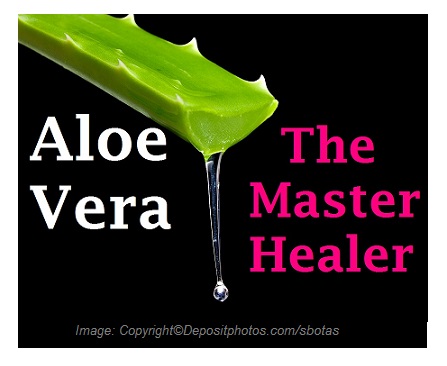Despite being a controversial remedy in conventional medicine, Aloe Vera is famous as “The Master Healer” in alternative medicine among naturopathic doctors, herbalists, traditional Chinese medicine and Ayurvedic medicine. It is a plant that has been claimed to have healing, rejuvenating, moisturizing, and soothing effects. The fresh leaf gel and latex are used. Aloe latex is the sticky residue left over after the liquid portion of cut leaves has evaporated.
Active Ingredients:
Aloe vera is a powerhouse of nutrients and it contains over 200 different nutrients including vitamins, minerals, amino acids, enzymes, and phytonutrients. The phytonutrients existed in aloe vera are anthraquinones, mucilage, saponins, and plant sterols.
Anthraquinones are phenolic compounds with laxative and cathartic effects. Mucilage is a glycoprotein that has an anti-inflammatory activity and covers the mucous membranes of the gastrointestinal tract and protects them from being irritated. Aloe vera contains small amounts of saponins and plant sterols.
Aloin is another constituent in aloe vera that gives a bitter taste to the aloe products and has a laxative property as well. Medical authorities have concerns about the safety of aloin in humans.
A unique ingredient in aloe vera is acemannan. It is a type of mucopolysaccharide that has an immune – stimulating activity and has been successfully used to treat feline leukemia in cats! Acemannan has also been used in the form of topical patch to help prevent infection after an oral surgery. It has FDA approval for use as an oral ulcer remedy. Moreover, acemannan exhibits activity against HIV virus, Klebsiella pneumoniae, and Candida albicans.
Clinical Applications:
Being touted to have internal and external healing effects, Aloe vera has been used in the following conditions:
AIDS
Candidiasis
Constipation.
Burns (minor)
Canker sore.
Cold sore (topical).
Diabetes.
Diabetic foot.
Gastritis.
Gastroesophageal reflux (GERD).
Genital herpes (topical).
Inflammatory bowel diseases.
Lichen planus.
Psoriasis (topical).
Skin ulcers.
Wound healing (topical).
Dosage:
Aloe vera is available in the forms of liquid, powder, gel and capsule. For constipation, a single dose of 100 – 200 mg per day could be taken for up to 10 days. For other indications, you should follow the instruction on the label or you could take as per recommendations from your health practitioner.
Contraindications and Interactions:
Aloe vera latex should not be used in the following conditions:
Inflammatory bowel diseases.
During pregnancy and breastfeeding.
Children under 12 years old.
Because of its laxative effect, aloe vera latex can cause diarrhea, which could decrease potassium levels in the body. Low potassium level can increase the risk of side effects of the medications digoxin, diuretics, and warfarin. Also it is recommended to stop taking aloe vera about 2 weeks before any elective surgeries, as there is an interaction between aloe vera and anesthetic agents, increasing the risk of bleeding during the surgical procedure.
Abazar Habibinia, MD, DFN, CSDTT
Executive Director of Canadian Academy of Sports Nutrition


